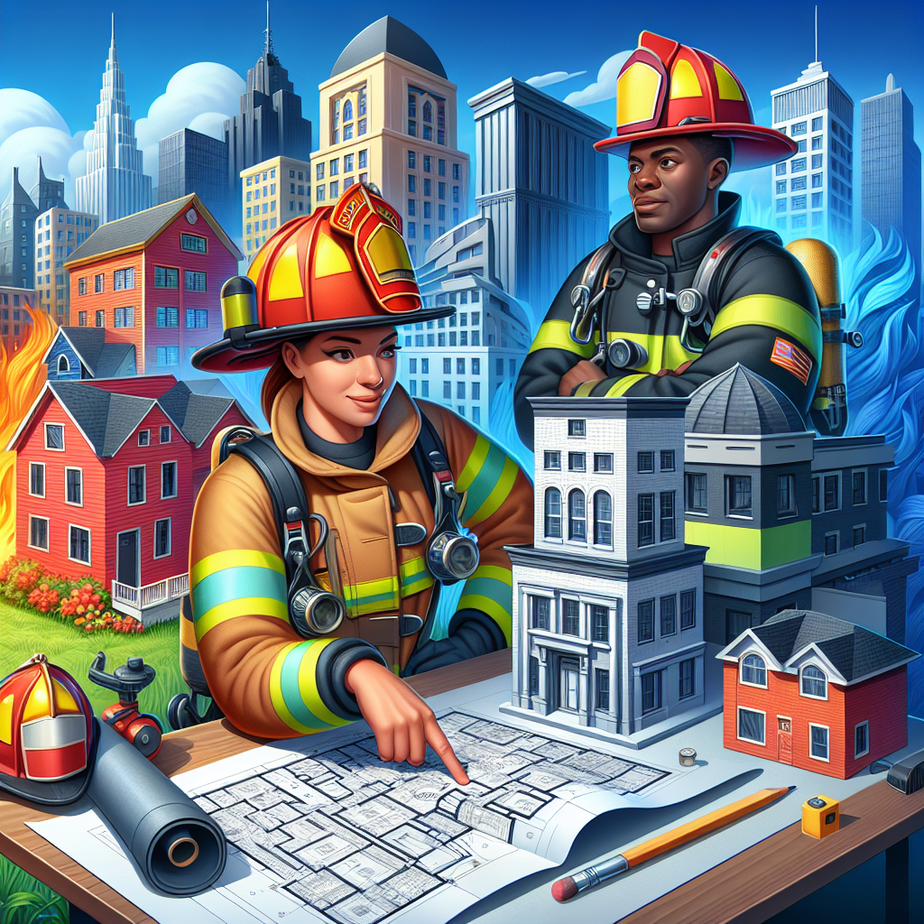Discover how building construction types impact firefighting tactics in Australia. Learn safety strategies to combat fires in homes, warehouses, and high-rises. 🚒🔥
When a fire call comes in, firefighters don’t just grab a hose and sprint into battle. They assess the structure, determine its weaknesses, and decide how best to tackle the flames with safety in mind. Understanding building construction types is a game-changer in firefighting tactics. In Australia, where we’ve got everything from classic weatherboard homes to towering skyscrapers, knowing how a building reacts to fire can mean the difference between a safe knockdown and a deadly collapse.
Let’s break down the five major building construction types 🏠🏢 with a bit of humor, a lot of practicality, and the crucial safety measures every firefighter must follow.
1️⃣ Type 1 – Fire-Resistive (The Fort Knox of Buildings) 🏛️
These buildings are designed to take a beating from fire. Think of towering city office buildings, high-rise apartments, and shopping centers. Made from concrete and steel, they take longer to collapse and can usually withstand extreme temperatures.
🔥 Firefighter Tactics & Safety:
✅ Stay low, stay cool: Heat gets trapped in these structures, so ventilation is key.
* Beware of falling glass: Those windows are great for scenic views but turn into deadly projectiles in a fire.
✅ Limited fuel load: Fire spreads slower due to non-combustible materials, but furniture, electrical systems, and synthetic materials still burn fiercely.
🔹 What would happen if you ignored construction types? Imagine running into a high-rise fire assuming it’ll collapse like a wooden shack. That’s a “bye-bye, safe exit” kind of mistake.
2️⃣ Type 2 – Non-Combustible (The “Sort Of Fireproof” One) 🏢
This is the slightly less resilient cousin of Type 1. These buildings are still made with non-combustible materials like metal and concrete, but they lack the fireproofing coatings. You’ll find these in warehouses, schools, and newer commercial constructions.
🔥 Firefighter Tactics & Safety:
✅ Structural integrity fades fast: Without fireproof coatings, steel expands and warps under intense heat. Be ready for a quick exit.
– Roof danger: Metal roofs will collapse soon after fire weakens support structures. Watch for sagging!
✅ Extreme heat bounce: Metal walls and ceilings reflect heat, turning rooms into ovens. Overhaul those ventilation tactics!
🔹 Ever seen firefighters suddenly retreat mid-operation? That’s what happens when steel beams start looking like spaghetti. Timing is everything.
3️⃣ Type 3 – Ordinary Construction (The Brick Beauty) 🏠🧱
These are your classic townhouses, small office buildings, and older shopping strips. The walls are made of brick or concrete, but the inside? A playground of wooden beams and flammable materials.
🔥 Firefighter Tactics & Safety:
✅ Check fire spread in concealed spaces: Fires hide in walls, floors, and ceilings, waiting to ambush unaware crews.
✅ Wall collapse risk: Those lovely brick facades? They can pancake when weakened. Keep a safe perimeter!
✅ Lath and plaster hold heat: Older buildings with plaster walls trap heat and suddenly release flames into unexpected areas.
🔹 Fun fact: Many Australian heritage buildings fall into this category. Beautiful? Absolutely. A hidden fire hazard? You bet.
4️⃣ Type 4 – Heavy Timber (The Aussie Bush Pub Special) 🍻🏚️
If you’ve stepped into a rustic Queenslander home or a century-old railway station, you’ve seen Type 4 construction. These feature large timber beams that resist fire better than smaller wooden elements, but once they go up in flames—good luck.
🔥 Firefighter Tactics & Safety:
✅ Time is your ally… until it isn’t: Heavy timbers take longer to collapse, but when they burn, they burn hard.
* Recognize fire-lodged beams: A massive burning beam falling on you? That’s not a good day at work.
✅ Expect embers and rekindles: Large wooden areas hold heat, meaning fires can restart unexpectedly.
🔹 Who knew timber could be so stubborn? Unlike a modern steel-frame house, timber doesn’t just crumble—it fights back before collapsing dramatically.
5️⃣ Type 5 – Wood-Framed (The Matchstick House) 🏡🔥
Ah, the classic Aussie home. Weatherboard houses, suburban developments, and good old timber-frame constructions fit the Type 5 bill. These buildings are fire-friendly (if you’re the fire) and can collapse in minutes.
🔥 Firefighter Tactics & Safety:
✅ Fast entry, fast attack: Delay means destruction in these structures.
* Flashover risk: With open-air designs and modern furnishings, these ignite faster than a snag on a barbie.
✅ Check exposures: Neighboring houses can catch fire from radiant heat.
🔹 Ever seen an entire house go from “manageable fire” to “raging inferno” in two minutes? That’s the Type 5 experience.
🔥 Why Construction Awareness Saves Firefighters’ Lives
Understanding these building types helps firefighters predict fire spread, collapse risks, and ventilation challenges. Ignoring construction factors can place crews in no-win situations—like standing under a compromised roof or attacking a fire from the wrong angle.
Top Five Firefighting Learnings from Building Construction
🚨 Know the Weak Spots: Every building has a vulnerability. Learn them before charging in.
🚨 Ventilate Smartly: Is the fire trapped inside a heat-locking structure? Cut ventilation points carefully.
*Risk vs. Reward: Some buildings allow more aggressive firefighting, while others demand caution. Recognize the difference.
🚨 Watch for Collapse Indicators: Sagging roofs, warped steel, bowing walls—they all scream danger.
🚨 Time Matters: In a Type 5 home, every second lost increases total destruction and flashover chances.
So next time someone says, *”It’s just a house fire, how hard could it be?”*—remind them that without tactical knowledge, even the best firefighters can walk into deadly situations.
🔥 Have a wild firefighting story? Drop it in the comments below! Want more fire-safety insights? Check out our latest posts! Stay safe, legends. 🚒👨🚒👩🚒



